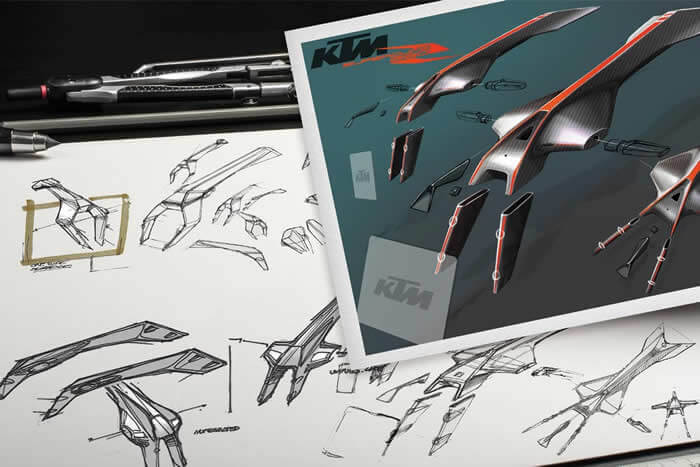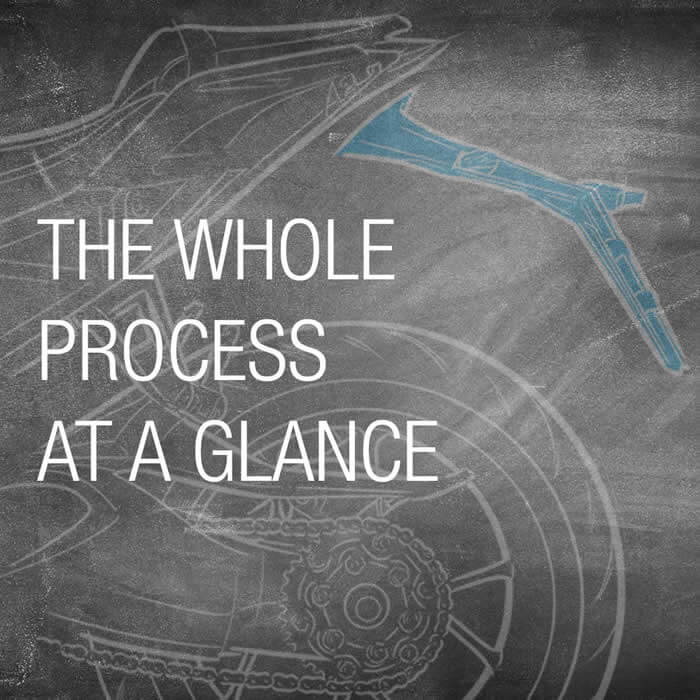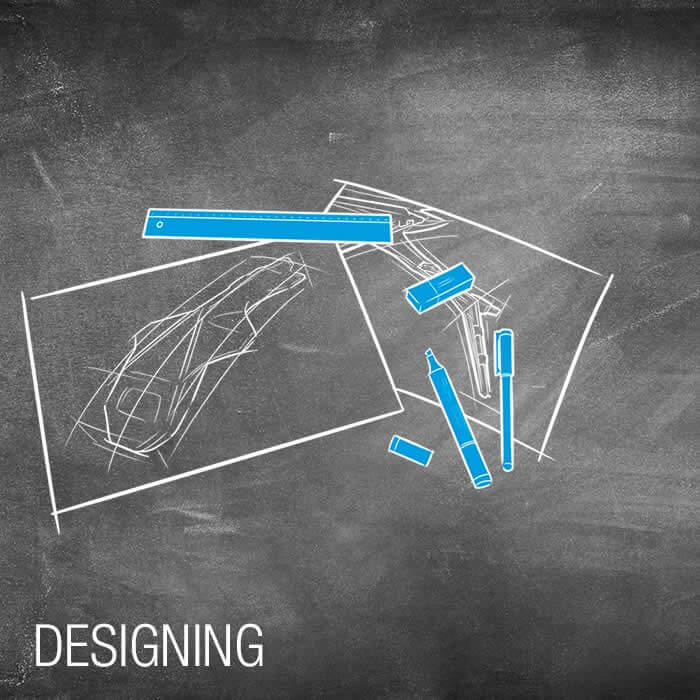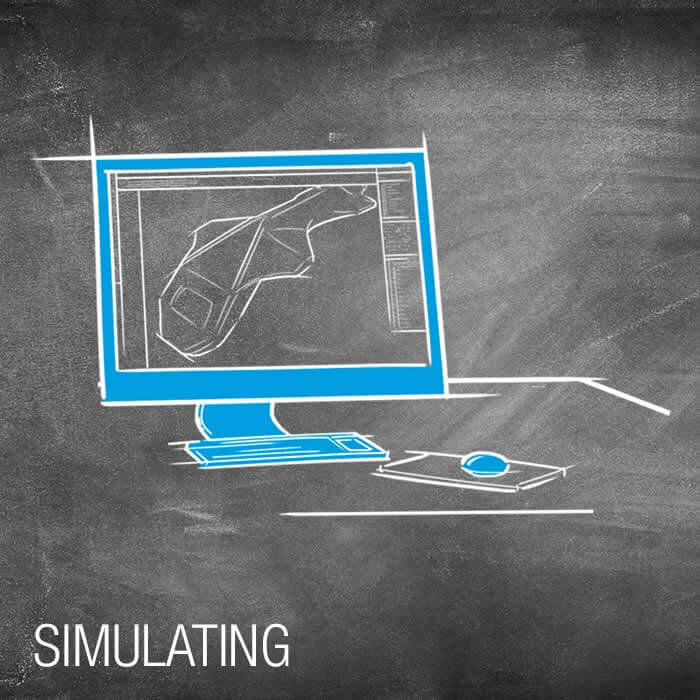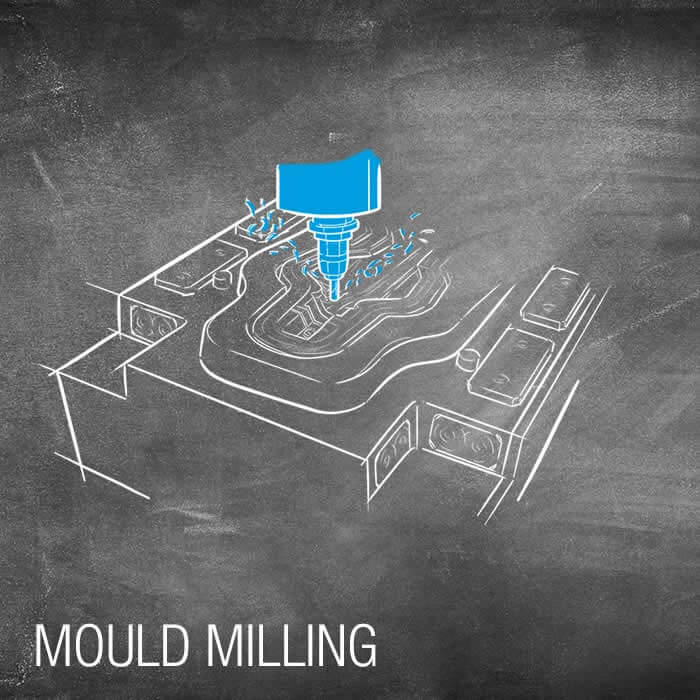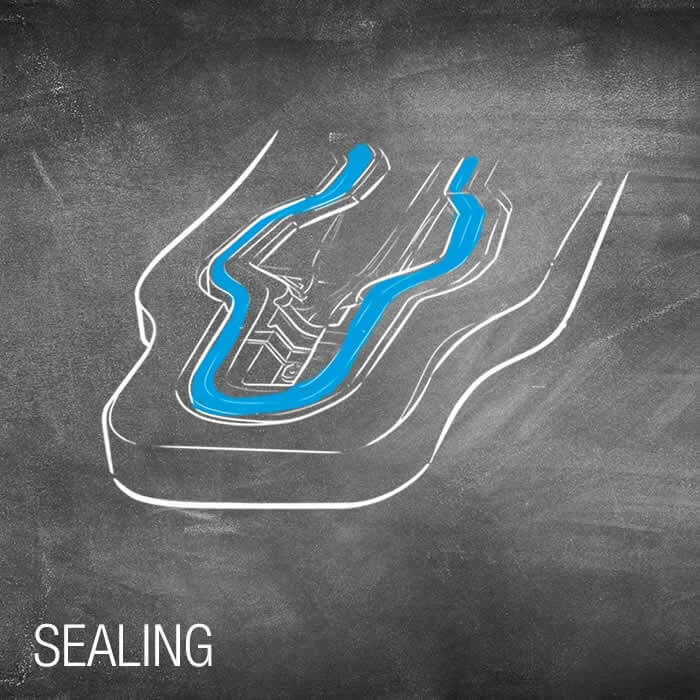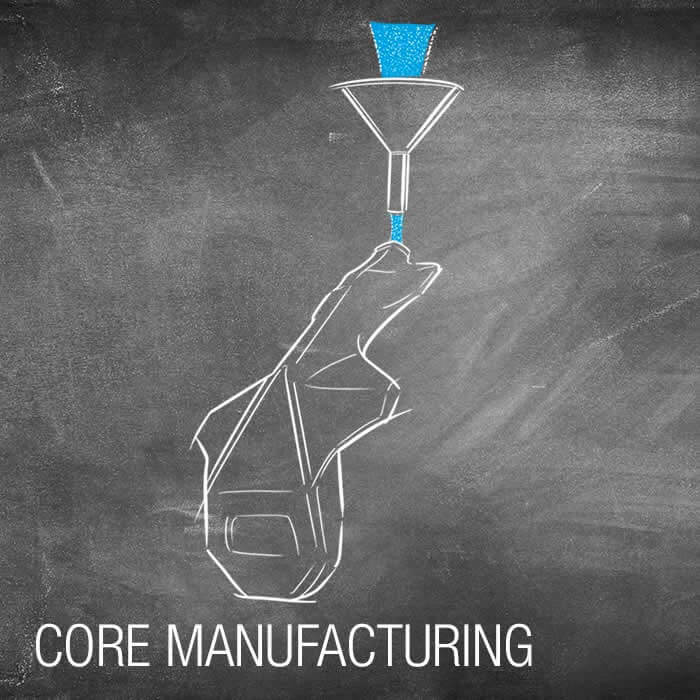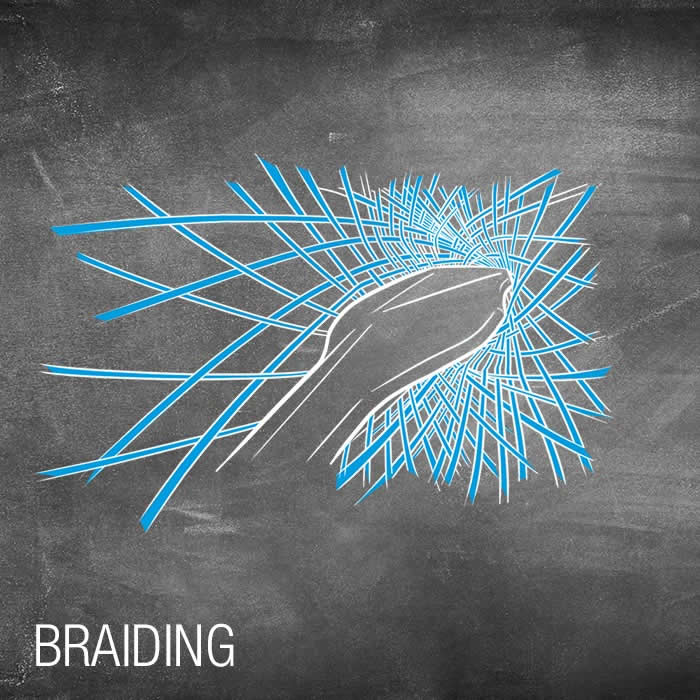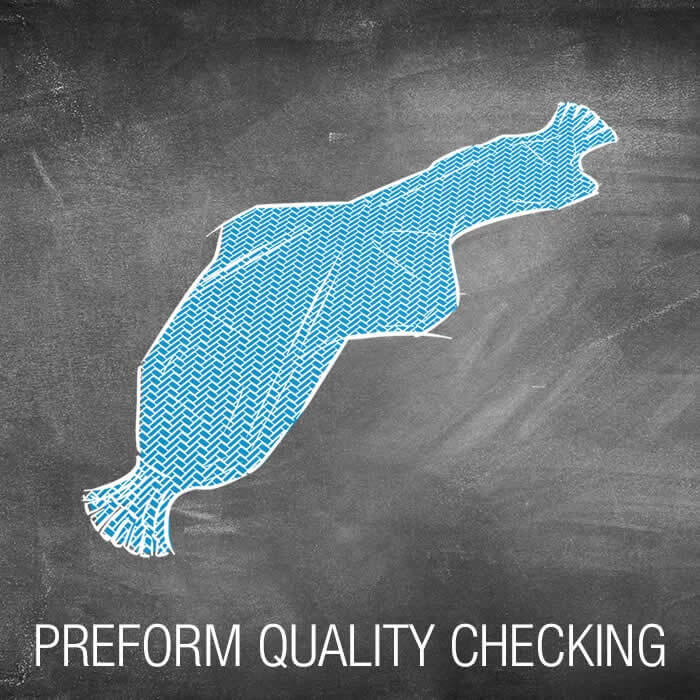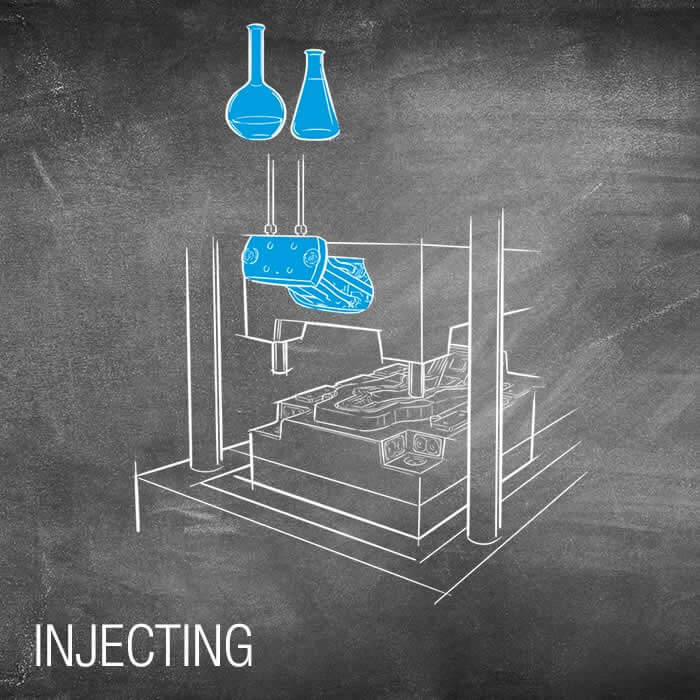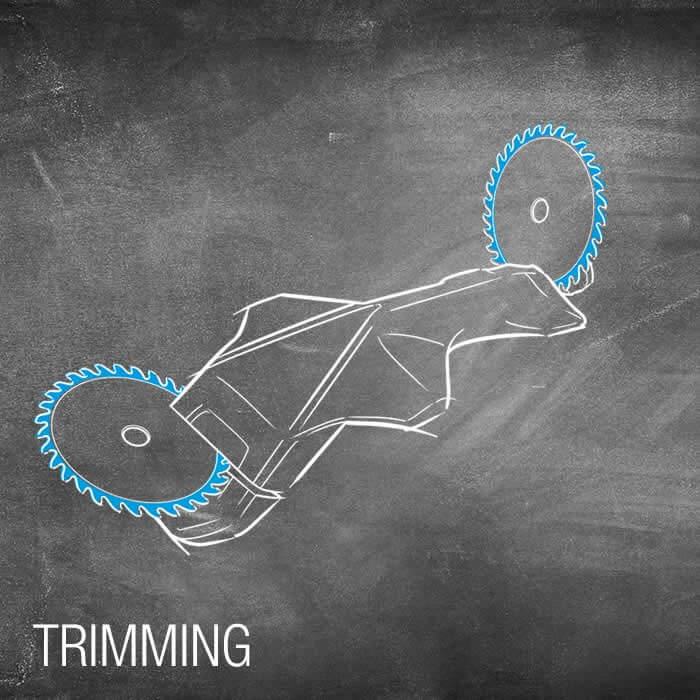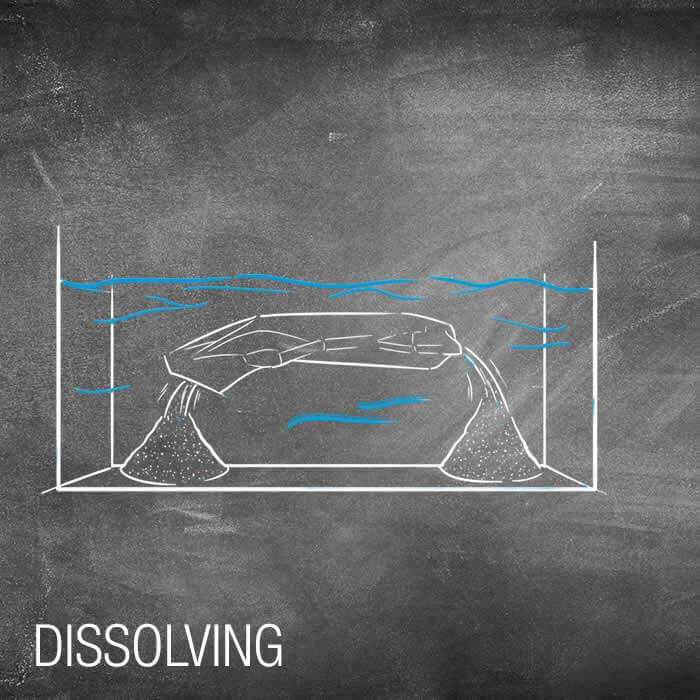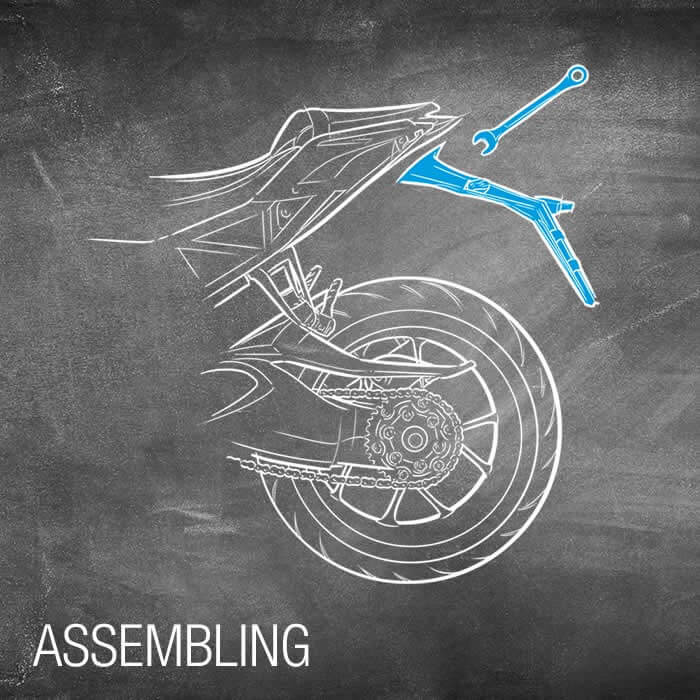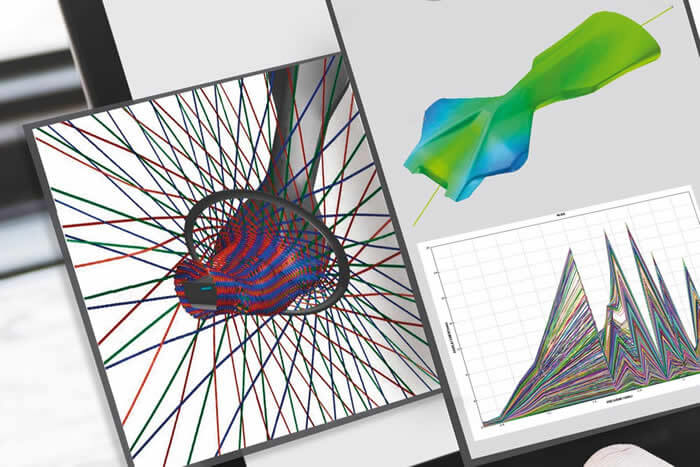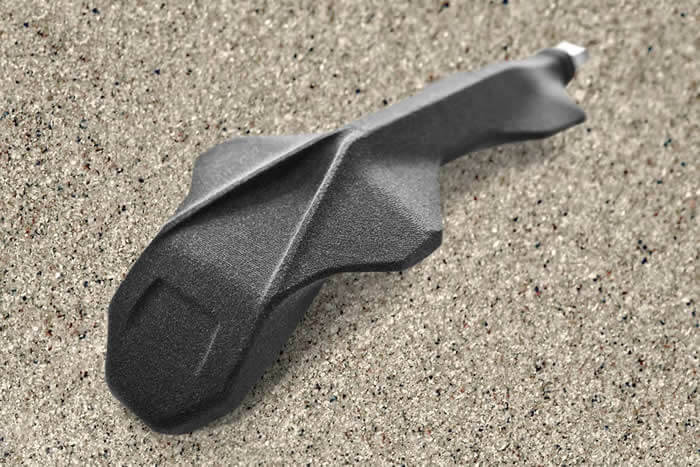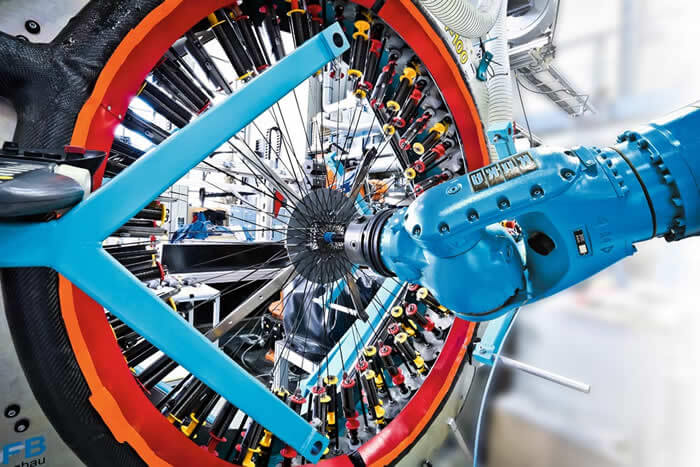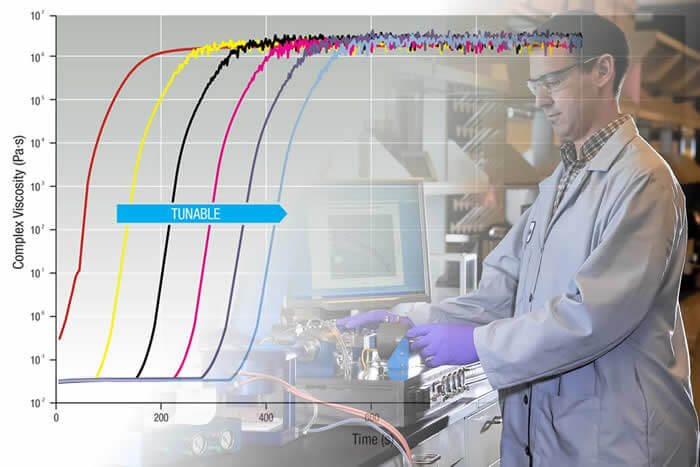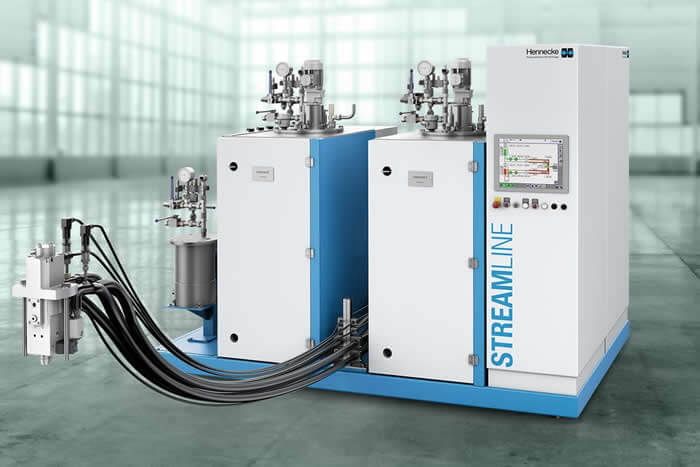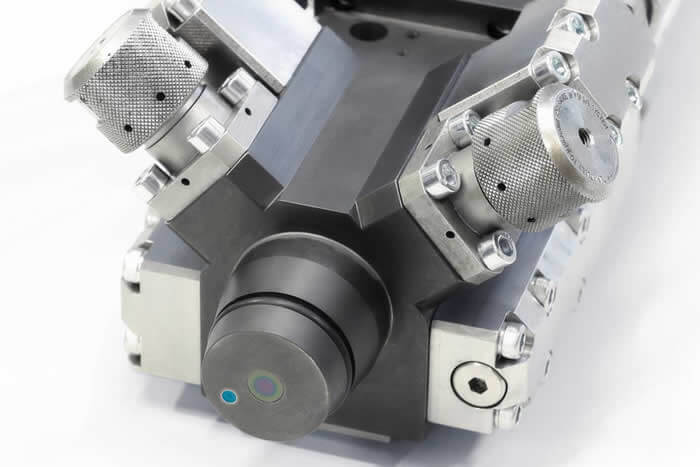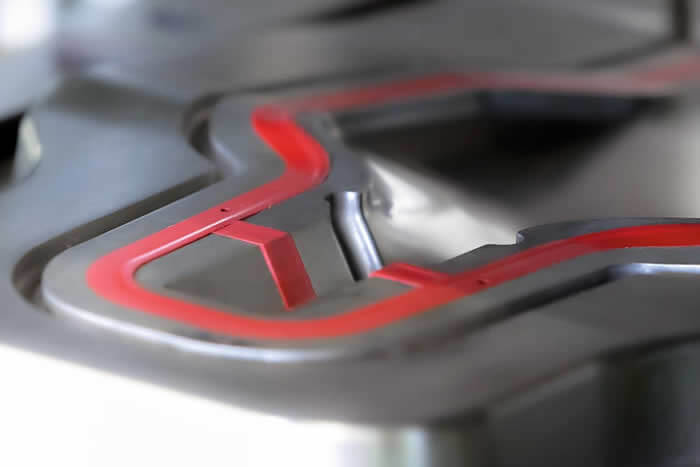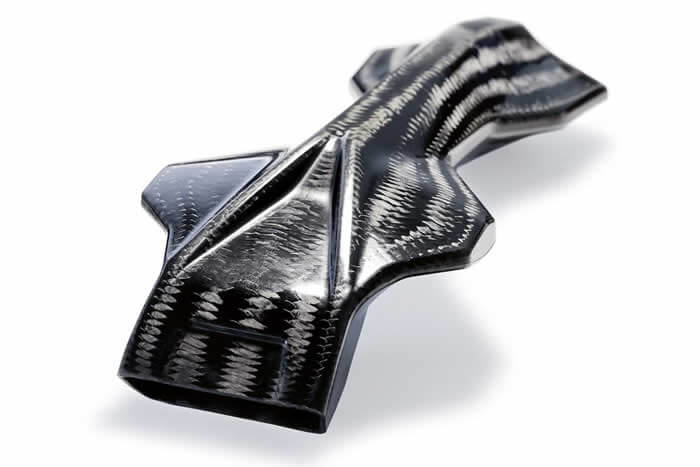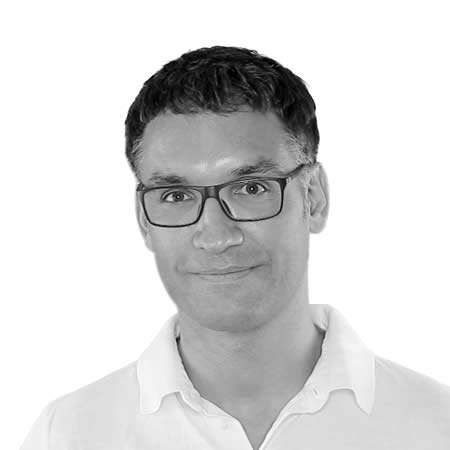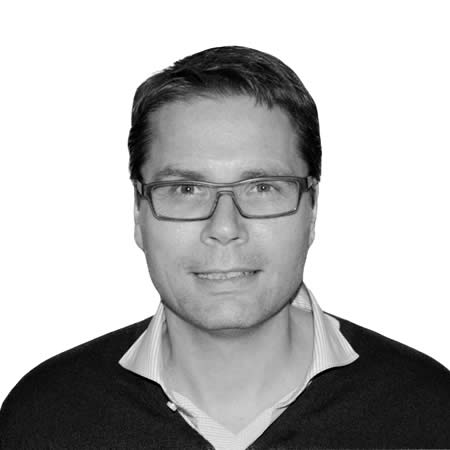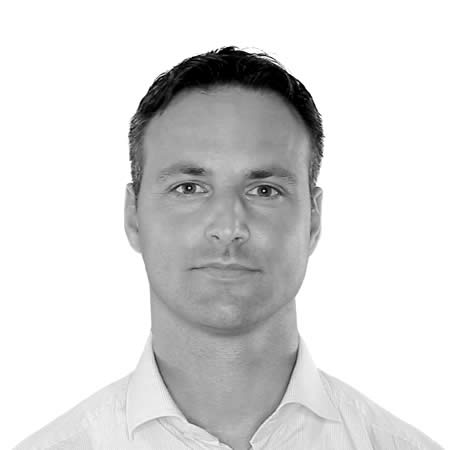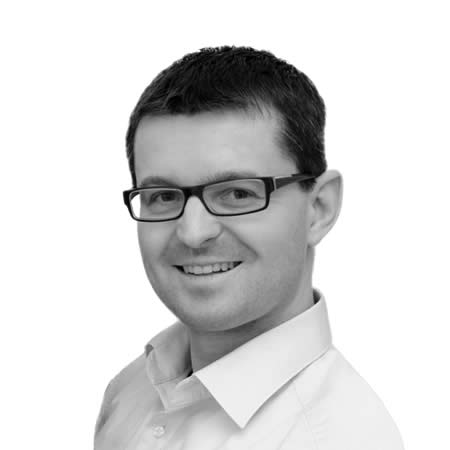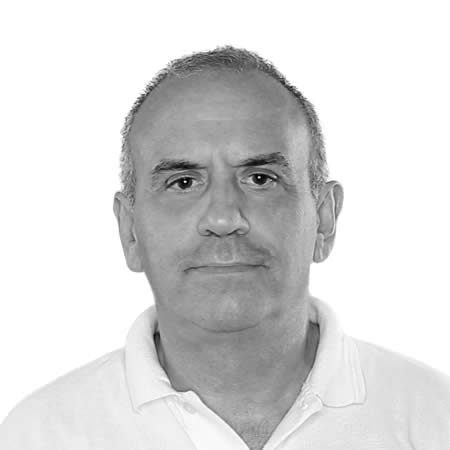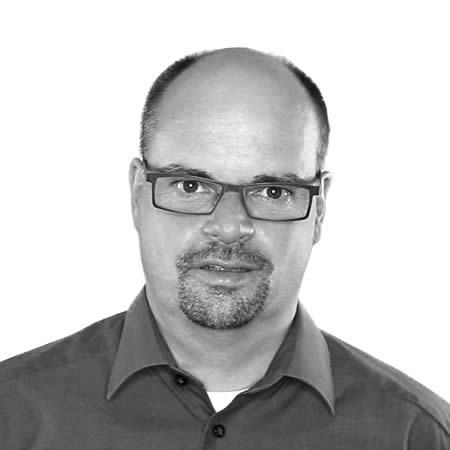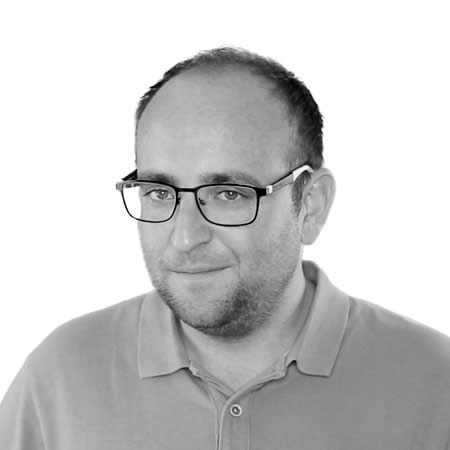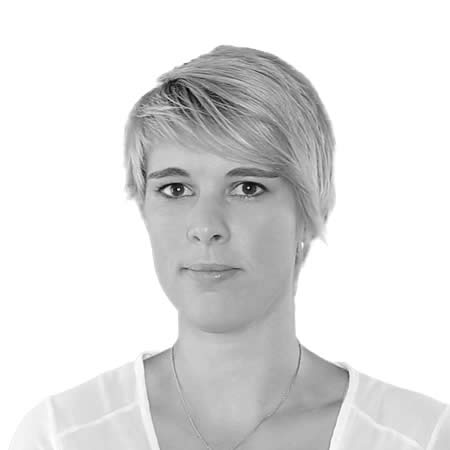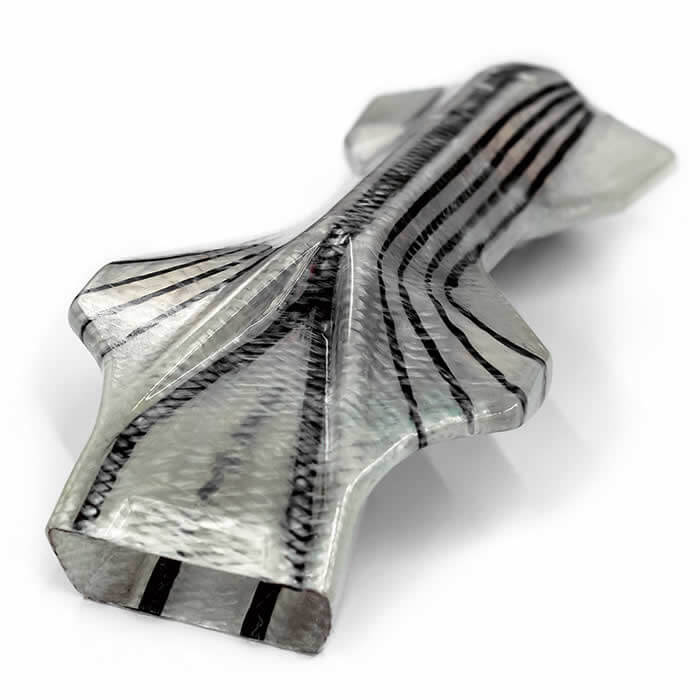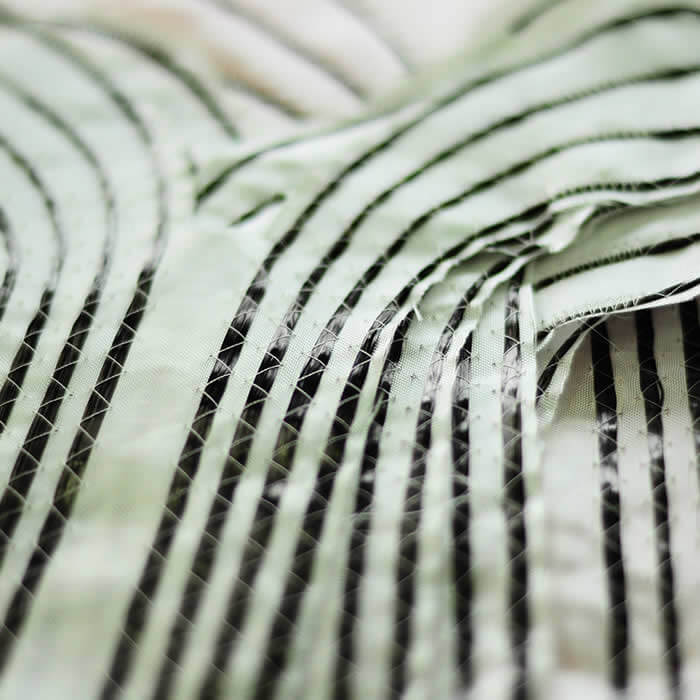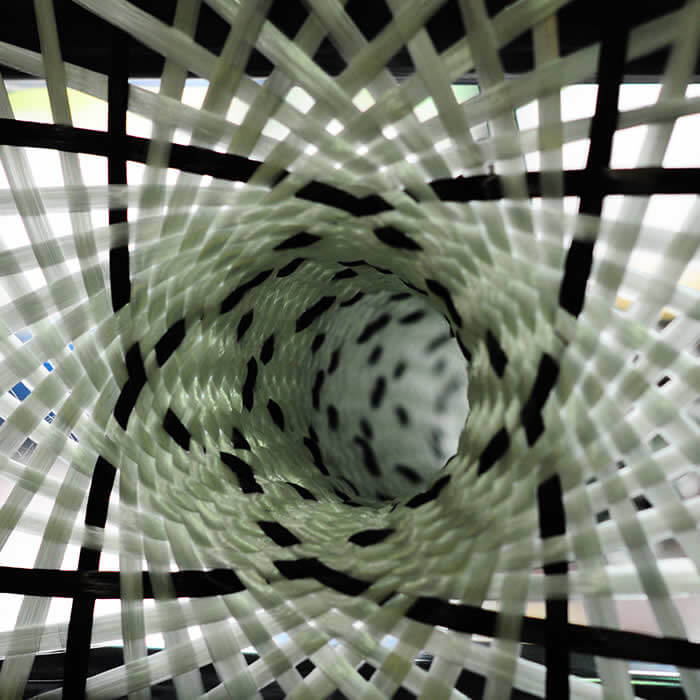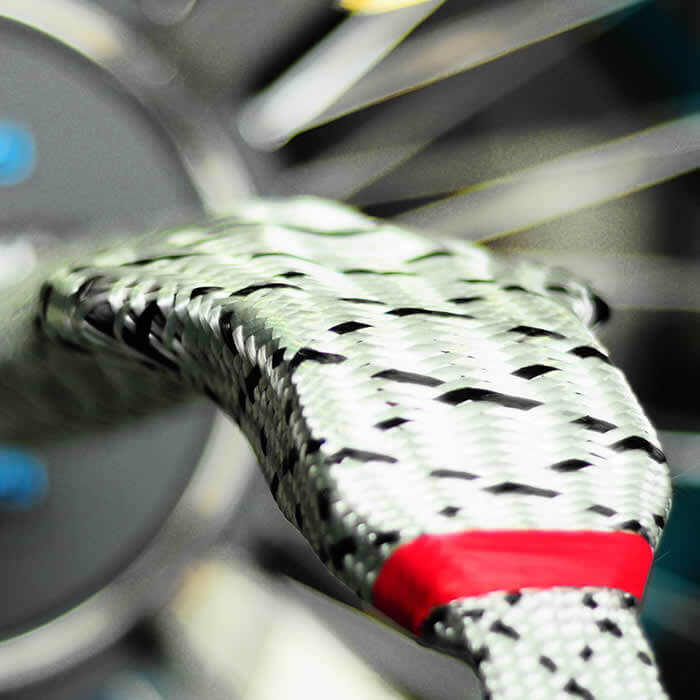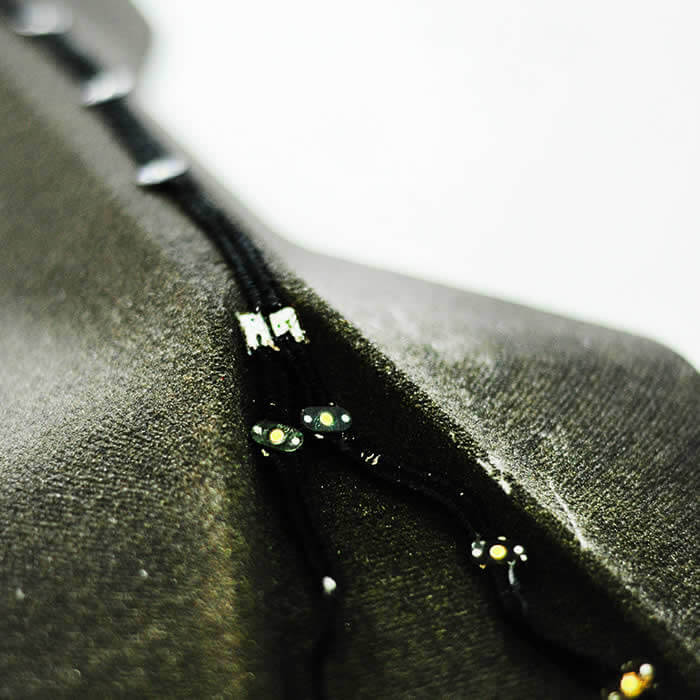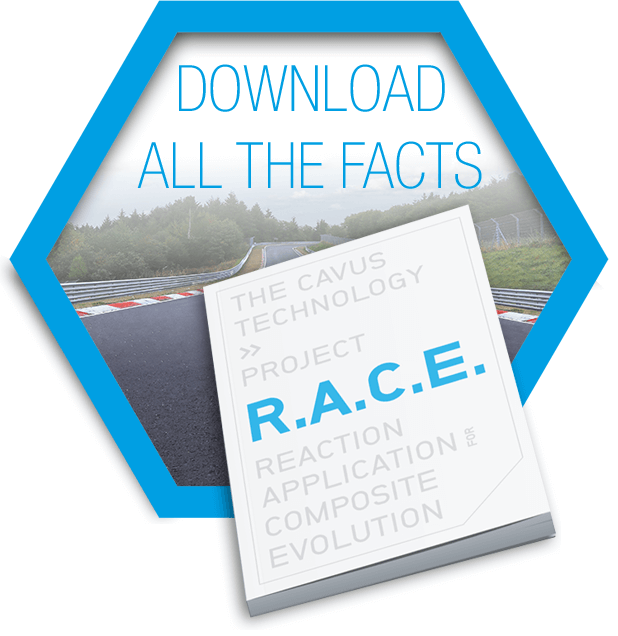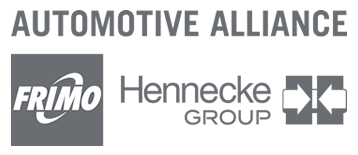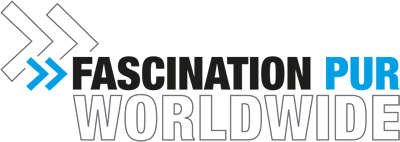The project was initiated under the management of Hennecke with the goal of bringing the new CAVUS production technology to series production. Together with the partners Engel, Huntsman, Murtfeldt, IFB Stuttgart, Persico, Reinsicht (formerly H2K Minerals) and KTM Technologies, an international team working holistically was formed consisting of 21 specialists who made it their task to develop a component all the way to series production, starting with a blank sheet of paper: the license plate holder for the KTM 1290 Superduke R. The challenge for this performance component lies in the interplay of the right construction and a production-ready design, and the combination of efficient processes based on the innovative CAVUS technology from KTM Technologies. CAVUS denotes the automated process chain for manufacturing structural complex hollow components from the core production, manufacture of the pre-form with carbon fibers in braiding technology through the HP-RTM process to the dissolution of the core material. This creates completely new design possibilities and functions.
Ideation and design
The interplay of design and engineering forms the basis for a successful component. Kiska-designers and experts of KTM Technologies use the “Inside Out Design” approach for the license plate holder of the Superduke. Initial manual drawings on paper form the basis for the development process that starts simultaneously. Aspects like building space, connection concept and the manufacturability of the component are considered right from the start.
Component and process simulation
Component and process simulation
In order to ensure process capability even in the early project phase, the IFB engineers (Institute of Aircraft Design) from the University of Stuttgart use various simulation tools. After the initial sketches are transferred into the CAD software, structure simulations of the component are created, which result in a first estimate of the necessary number of braiding processes. In the next step, these results are used for the braiding simulation, which provides insight about the emerging fibre angles and possible problem zones.
Core technology
A central element of the CAVUS technology is the sand core of Reinsicht (formerly H2K Minerals). For the R.A.C.E. project, the core was set to a temperature resistance of 330 °C and a pressure resistance of 500 bar. The core also shows its special characteristics after the infiltration of the braid with the matrix. Removing it from the component without increased effort is done with just water. Furthermore, the resulting solution is not toxic. Due to the independent separation of the core components, the elements can easily be separated and recycled. In this process, up to 98 percent of the core is re-usable, depending on the material combination.
Preforming
The fibres were applied by the Institute of Aircraft Design at the University of Stuttgart using braiding technology. The core was fixed in a clamping device in the robot of the braiding unit and guided through a braiding wheel following a braid path calculated by the simulation. A Herzog RF 1/64-100 radial braider was used for the R.A.C.E. project. The textile was applied to the core with 64 braid strands consisting of 24k carbon fibre rovings. The strength of the springs in the bobbins determines how tight the braid sits on the core. 600 grams tensile force of the springs provided the best result of flexibility and stiffness for the biaxial braid.
Polyurethane matrix
Outstanding mechanical properties as well as excellent processability characterize the polyurethane system VITROX® RTM 332 of the company Huntsman, used for the license plate holder of the Superduke 1290R. The high impact strength and elasticity of the material meet the requirements of the component. Above all things, the processing capabilities are important for the HP-RTM-process, as the cycle time is decisive for series production. With an adjustable “snap-cure” time of less than 30 seconds up to 24 hours, VITROX® enables the shortest cycle times.
Production in the HP-RTM process
Production in the HP-RTM process
The high and consistent component quality is a particularly decisive argument for using the HP-RTM procedure. In the R.A.C.E. project, the compact system set-up is achieved through a STREAMLINE Hennecke metering machine and an Engel elast 400V vertically closing press. The entire process can be controlled via one system due to the intensive collaboration of Engel and Hennecke. The two components polyol and isocyanate are processed in the STREAMLINE metering plant. A consistent temperature is ensured by the temperature control of the entire system including the tube packet by recirculating the components. Additionally, a homogenized release agent can be injected via a third line.
The highest surface quality thanks to Hennecke mixheads
The highest surface quality thanks to Hennecke mixheads
Hennecke uses its newly developed mixhead MN10-3 RTM to mix the components. The high-pressure mixhead can also be used for semi-automatic docking processes due to the conical outlet pipe with integrated internal mold pressure sensor. In order to counteract polymerization shrinkage, the self-cleaning piston also offers the option of applying additional pressure during the curing process of the matrix with hydraulic control. The highest surface qualities can thus be achieved. A further special feature of the MN10-3 RTM is the serial equipment with the patented balanced-pressure injectors. This completely eliminates possible influence of the internal mold pressure on the pressure development of the components.
Mold technology with innovative sealing material
Mold technology with innovative sealing material
Using highly reactive plastics under internal mold pressures of up to a maximum of 200 bar places high demands on mold technology. On the one hand, the mold must ensure long lifetimes when using the abrasive carbon fibres, and on the other hand guarantee a consistently highly polished surface. Thanks to the expertise of the toolmaker Persico from Nembro, Italy, these requirements were able to be successfully implemented in the R.A.C.E. project. Under average internal mold pressures of around 100 bar, the seal must also meet the highest demands. A novel sealing material of the company Murtfeldt was used for this purpose. Murlock®, a thermoplastic material, provides highest sealing properties for several hundred process cycles. Compared to conventional round cord seals, the material is resistant towards damages by remaining materials or carbon fibres and also chemically inert towards reactive resin systems.
Post-processing of components
Post-processing of components
Dissolving the core material with water is a special highlight of the CAVUS technology. The special nature of this process is that the focus is on sustainability. The core can be removed from the component without additional, environmentally harmful solvents. After cutting open the demolded component along the trim lines, it is placed in a water bath. The sand separates in the solution and can be completely re-used for new cores after drying. The binding material in the solution can either be disposed of as process water or can be separated and used as fertilizer in agricultural applications. After the sand is released from the component, it can be added to the conventional post-processing steps of fibre composite components, and finally mounted on the vehicle.
